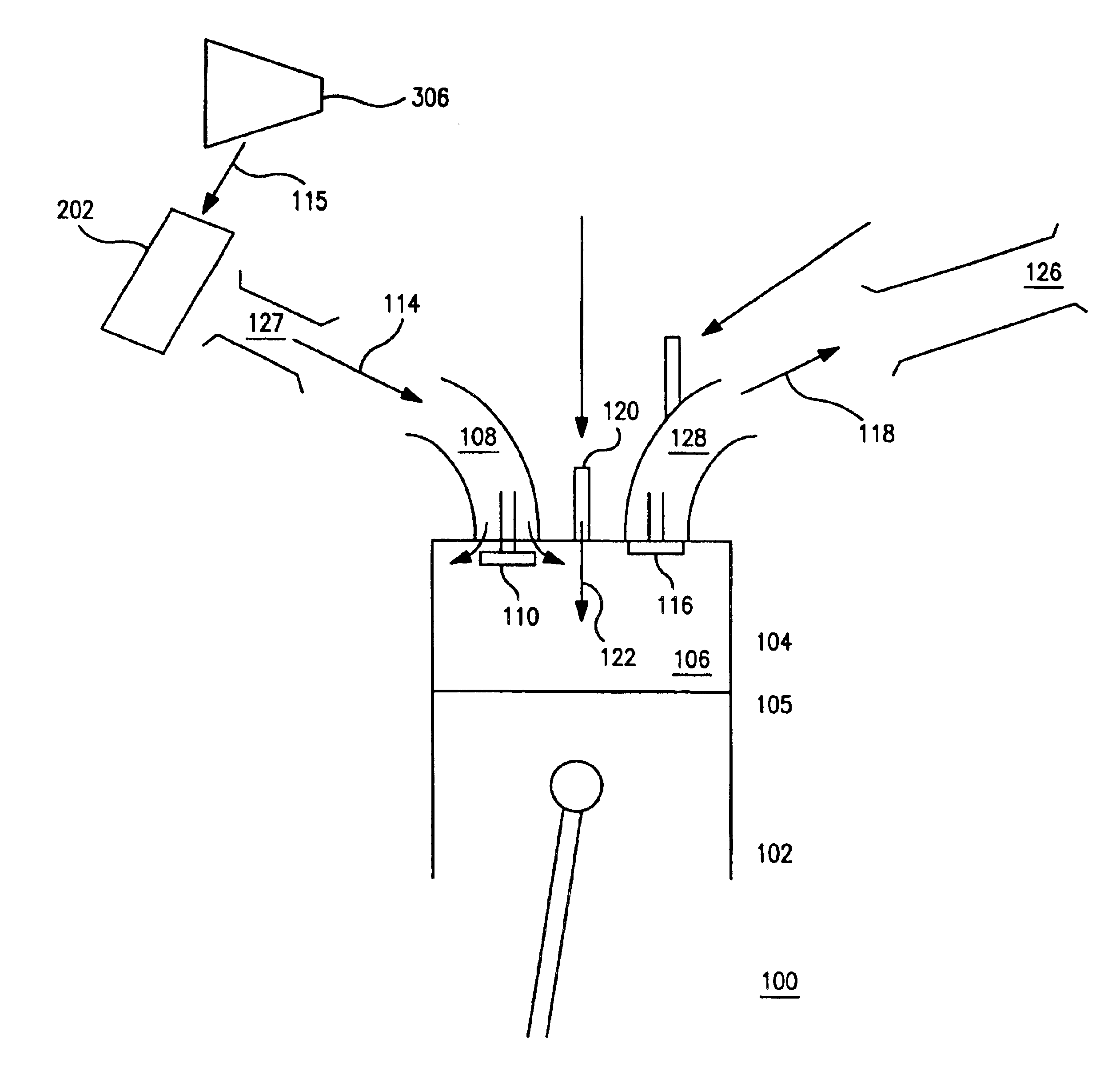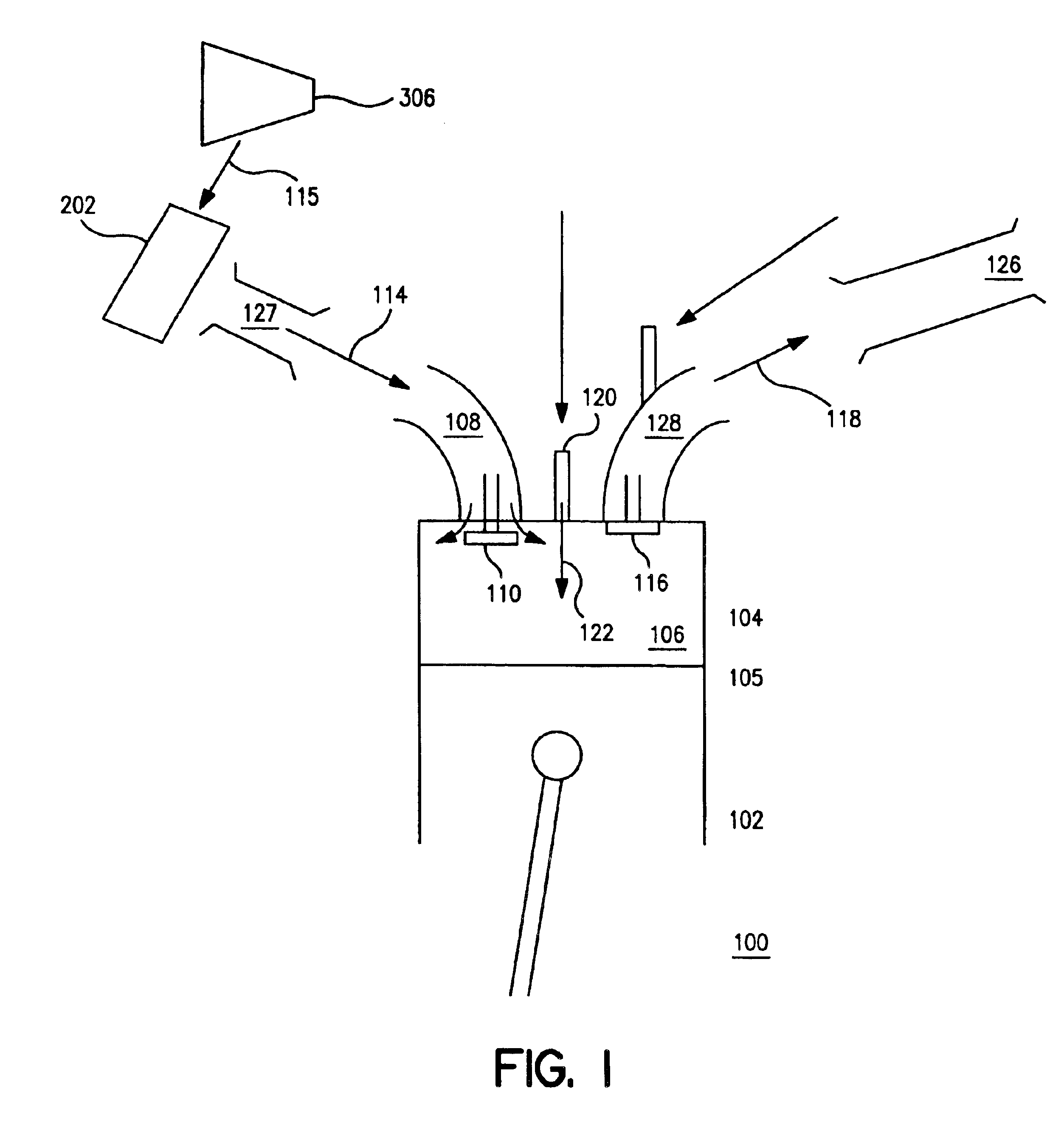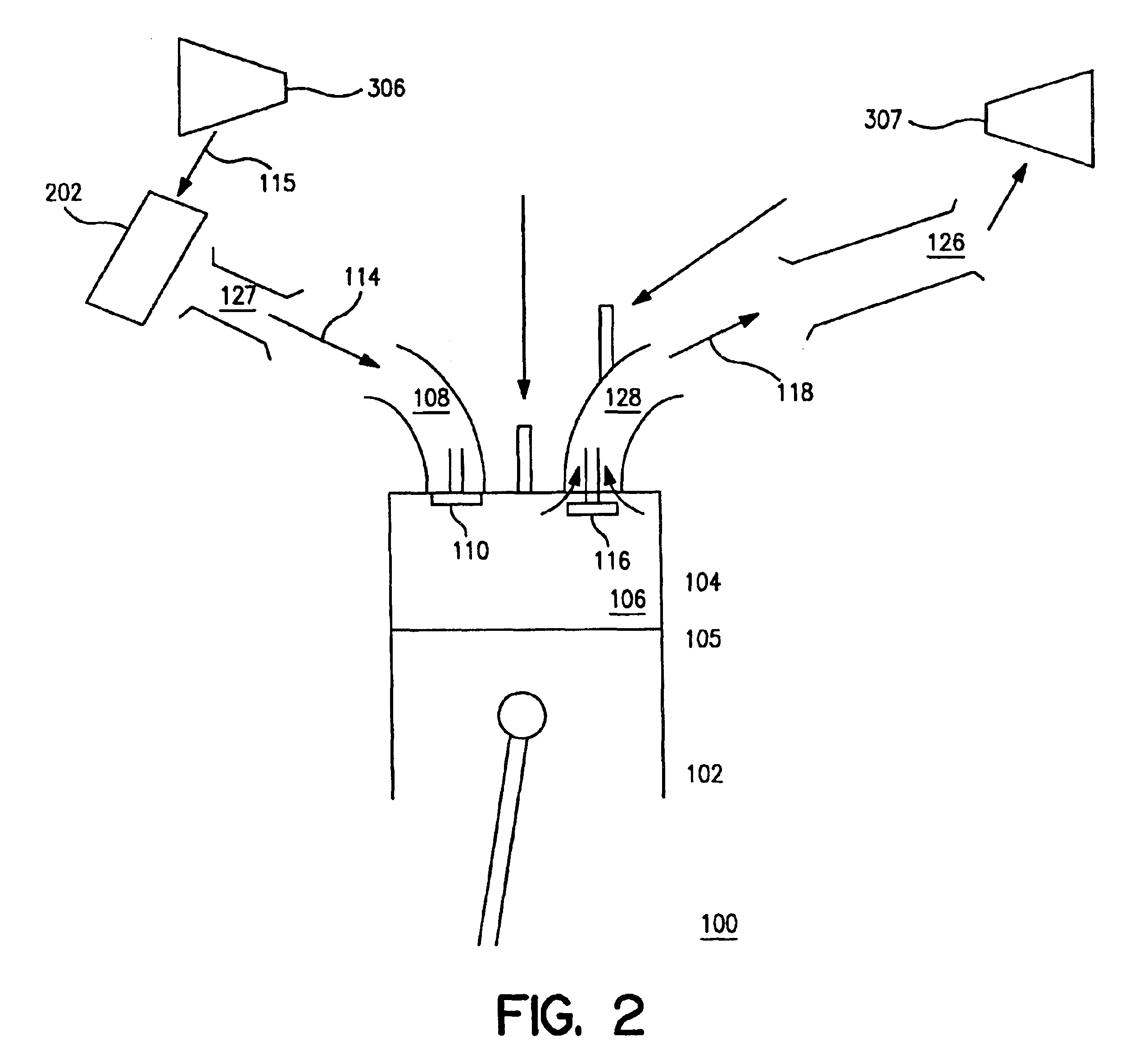Turbo-charged internal combustion engine with in-cylinder EGR and injection rate shaping
a technology of internal combustion engine and injection rate shaping, which is applied in the direction of valve drives, non-mechanical valves, tractors, etc., can solve the problems of high engine heat rejection, inability to reduce the amount of air available for combustion, and inefficient or incomplete combustion of unburned hydrocarbons and carbon monoxide, etc., to achieve the effect of improving the efficiency of the turbocharger
- Summary
- Abstract
- Description
- Claims
- Application Information
AI Technical Summary
Benefits of technology
Problems solved by technology
Method used
Image
Examples
first embodiment
[0043]In FIG. 1 is shown a turbo-charged internal combustion cylinder assembly 100 according to the invention. Although the embodiments described herein are described in the context of a compression-ignited engine, the concept of the invention could be adapted to other types of ignition as well, such as, e.g. spark-, hotbulb- or glowplug-ignited engine.
[0044]In assembly 100 a cylinder 102 has a cylinder head 104 substantially fixedly disposed at one end 105, with a combustion chamber 106 disposed in-cylinder head 104. Cylinder head 104 has an intake port 108 with an intake valve 110 movably disposed in intake port 108, through which combustion chamber 106 may communicate with, e.g. a compressor 306. Compressor 306 may, e.g. provide pre-combustion gases 114 through an intake manifold 127, and also through an aftercooler 202 if so equipped, to combustion chamber 106 when intake valve 110 is substantially open. Pre-combustion gases 114 may be, e.g. air, such as a mixture of nitrogen, o...
second embodiment
[0085]In FIG. 10 is shown a turbo-charged internal combustion engine 1000 according to the invention. In FIG. 10 a plurality of cylinder assemblies 100 may be combined to form an engine 1000. In this embodiment, six cylinder assemblies 100 are combined to form engine 1000. In an alternative embodiment, four cylinder assemblies 100 are combined to form engine 1000. In a further alternative embodiment, eight cylinder assemblies 100 are combined to form engine 1000. Various numbers of cylinder assemblies.100 may be arranged in, e.g. an in-line, a vee, a radial, an opposed, or a flat configuration without departing from the spirit of the invention.
[0086]As shown in FIG. 11, six cylinder assemblies 100 are connected to a first and second turbo-chargers 804, 806. In this embodiment, half of the plurality of cylinder assemblies 100 communicates substantially exclusively via exhaust manifold 126 with first turbo-charger 804, while the other half communicates substantially exclusively via ex...
third embodiment
[0091]In FIG. 12 is shown the invention. In FIG. 12 a turbo-charged internal combustion engine 800 may be installed in a tractor 1200. An embodiment of the invention could also be used in, e.g. stationary applications, marine applications, agricultural equipment, earth moving equipment, locomotives, or aircraft, including lighter-than-air craft.
PUM
 Login to View More
Login to View More Abstract
Description
Claims
Application Information
 Login to View More
Login to View More - R&D
- Intellectual Property
- Life Sciences
- Materials
- Tech Scout
- Unparalleled Data Quality
- Higher Quality Content
- 60% Fewer Hallucinations
Browse by: Latest US Patents, China's latest patents, Technical Efficacy Thesaurus, Application Domain, Technology Topic, Popular Technical Reports.
© 2025 PatSnap. All rights reserved.Legal|Privacy policy|Modern Slavery Act Transparency Statement|Sitemap|About US| Contact US: help@patsnap.com



